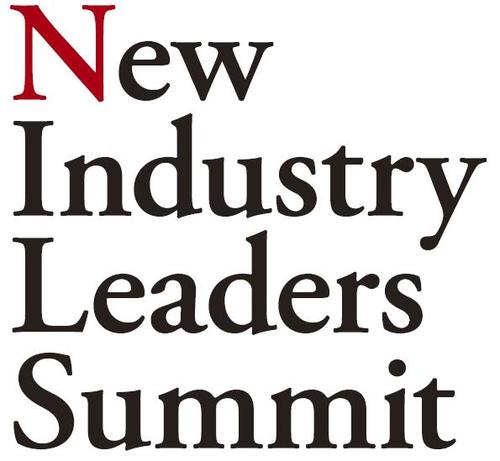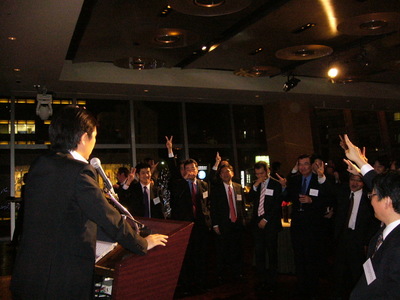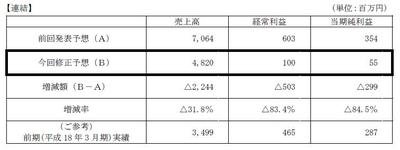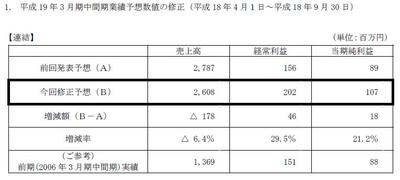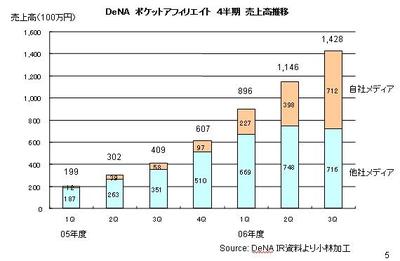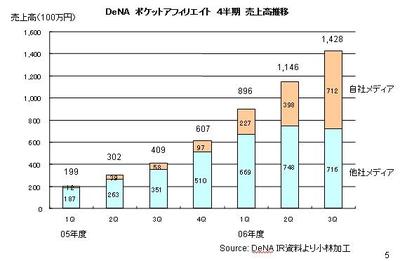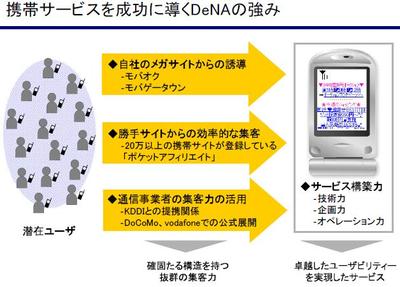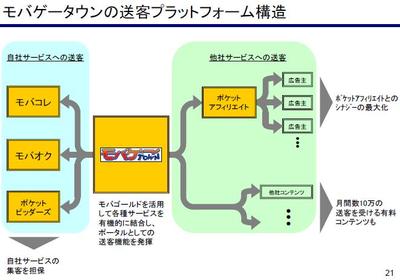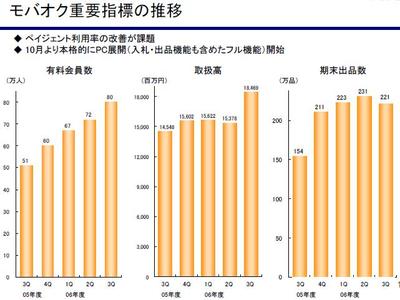が13百万ドルの資金調達を行うそうだ。 Net Sense という記事はValuation などなんでそこまで知っているのか?と思うネタがあって面白い。 Likedin の時価総額は250百万ドルだそうだ。売上規模もあって、ビジネス向けの人脈サイトとして価値あるサイトになったということが、250百万ドルの評価につながったということだろう。
以下、
Linkedin gets down to businessの記事に解説・コメントを加えました。
SAN
FRANCISCO (MarketWatch) -- Remember when popular social network
Facebook received a half-a-billion dollar valuation earlier this year?
You might raise an eyebrow when you hear about how venture capitalists
are set to value business network Linkedin, if only because you're one
of those who've wondered just how or whether this company makes money.
Well, apparently the Palo Alto-based is making money, and investors have noticed.
Venture capitalists are close to finalizing a venture capital round,
investing $13 million and valuing the company at a post-financing
valuation of $250 million. (意味としては増資後の時価総額が250百万ドル。つまり増資前のPre-Money Valuation 237百万ドルである。業界用語では「プレ」とか「ポスト」とか略される。 )
Since the deal isn't closed yet, anything
can happen between now and then, cautioned Keith Rabois, Linkedin vice
president of business development, who came into the MarketWatch
studios for an interview.
See my blog for the interview with Rabois.
So, how much money is Linkedin making? Rabois wouldn't provide any
details about cash flow, only to say that the service has been
profitable since March, when Linkedin had 45 employees.
Today, Linkedin has 70 employees and
estimates to be a year behind popular social network Facebook in
generating sales, according to Rabois. That means Linkedin is set to
generate between $45 million and $60 million next year. Linkedin CEO
Reid Hoffman boldly predicts the company will hit $100 million in 2008. (売上規模は45百万ドルから60百万ドルと推定されているそうだ。 結構売上規模あるよねという感想)
Now, Linkedin's valuation certainly
pales in comparison to the valuations given to broader social networks
Facebook, YouTube and MySpace, which News Corp paid $580 million for last year.
(英語勉強になる。pale は「青ざめる」という動詞。 Facebook とかYouTube とかMyspace と比べるとお高いのでは? という話)
In fact, its valuation is relatively reasonable. Based on Linkedin's
revenue run-rate, and its post-money valuation of $250 million, it's
being valued similar to Monster.com , which trades for about 5 times sales.
("Relativeily reasonable ”という表現はよくでてくる表現だ。よく買収や投資をする際に同業他社との比較になり、PERなど指標を比較して妥当性を考えます。今回はMoster.com という会社の時価総額は売上高の5倍だよという話。)
Nonetheless, few companies can command that valuation, and it's
certainly worth noting ("worth noting"は注目すべき という意味) because it underscores just how much investors
and companies are willing to bet on communities and networks of any
kind. Google's $1.65 billion embrace of YouTube and $900 million deal with MySpace is a testament to the value of these networks. (意味としては、Linkedinのような時価総額に値する会社はほとんどないという点と、注目すべきことは投資家や会社が、SNSのようなコミュニティやネットワークに対して賭ける金額がわかったということである。 実際 GoogleはYouTubeの買収評価額やMySpaceとの広告契約の金額が証拠だ。 結局のところ、価値のある=時価総額などが高いのネットワークやコミュニティはごく少数だ。しかし、少数の勝ち組には途方もない価値がつくといったことを言っている。 MySpace,Facebook, YouTubeに続き、Linkedinも仲間入りしたということだろう。)
These sites are so popular that advertisers are expected to spend
nearly $900 million across all the social networks next year and more
than $2 billion by 2010, up from $350 million last year, according to
eMarketer.
See Net Sense: Social networks will drive growth. (Socila Networkに対する広告投下は今後も拡大が見込まれる分野だ。 )
News Corp's MySpace alone is estimated to generate between $400 million
and $500 million in calendar year 2007, according to Richard Greenfield
of Pali Research.(MySpace は400~500百万ドルの売上規模だそうだ。大きいですね)
Niche-fication
But many industry observers expect marketers to increasingly look to
vertical niche sites to target their advertising. And consumers are
expected to increasingly join smaller social networks as they find more
comfort in sites where they can connect with others based on similar
interests. (この部分は面白い。SNSも特化したもの、つまり小さい規模のものになっていくだろうという話)
Just this week, I've received a number
of emails from startups creating social communities or fan clubs for
big media properties.
Sports Illustrated just inked a deal
with one-year-old Takkle.com, a social network for high school
athletes, to provide a community element for the magazine's under-18
readers. Another tiny company called Wetpaing is creating a social
network and wiki-community for "Lost" the popular show produced by Walt
Disney's ABC.
Hence, Linkedin is riding this trend toward vertical, niche communities
around interests. In fact, the company was the only business network
when the pioneers of social network sites came to be back in 2003. Back
then, Linkedin, Tribe Networks and Friendster were among the early
movers.But as those two sites have struggled,
Linkedin stayed the course. (LinkedinはSNSのパイオニアの1社であった。ビジネスネットワークに特化し、生き残っている。)
Today, it has 8.5 million members, with 30%
to 40% active users.(アクティブの定義は不明だが、30-40%が利用しているというのは素晴らしい。実際にUSに出張した際にLinkedinを実際に利用しているよという話を伺った。私もアカウントもっています。) It's the No. 23 top social network site, with 1.5
million unique visitors and 36 million pageviews, according to
Nielsen//NetRatings. Friendster has 935,000 unique visitors while Tribe
has just over 500,000.
Networks collide
Not surprisingly, given that vertical sites have no option but to move
into other verticals as they expand, Linkedin is finding itself
competing against other social networks, that weren't necessarily
business focused initially.
Facebook, as well as Microsoft ,
have corporate networks targeting the business community. These
networks probably aren't direct threats, but there is overlap. I'm a
member of the Dow Jones network on Facebook, and there are a number of
Dow Jones employees on Linkedin.(Facebookも大学だけでなく、企業のネットワークも提供している。Linkedin とかぶっているよという話)
Rabois isn't afraid of Facebook,
however. He thinks Facebook users will graduate to Linkedin because
they'll want a "professional" identity and not one that's affiliated
with a school. (この見方は面白い。学生向け と ビジネス向けのは違んだよ。 卒業するよという話。)
Linkedin has faced competition before from Monster as well. But as Rabois says, "no one used it."
Monster and Linkedin differ in their approach. Monster aggregated a
bunch of job seekers; Linkedin aggregates job seekers and their
networks of friends. Therefore those hiring are more likely to find
qualified candidates on Linkedin because the candidates are being
referred or recommended. There is a referral system at work that wasn't
at work at Monster.
Making money
So,
how does Linkedin make money? Linkedin has three revenue streams today
-- sponsorships, subscriptions to scour and contact Linkedin's 8.5
million membership base, and job listings.
(収益モデルは3つあるという話)
About 45% of the revenue
comes from subscriptions, according to Rabois. Corporations, such as
Microsoft and Salesforce, pay between $10,000 and $100,000 annually to
let their internal recruiting staff use Linkedin's database for
potential hires.
Individuals also pay $20 per month to
be able to contact people outside their network, but those paying
subscribers are 1% to 2% of the members who enjoy the service for free.(ユーザー課金で売上の45%を占めるというのは面白い。ビジネスネットワークでそれなりの規模があると有料ユーザーが少なくてもそれなりの規模になるということを示しているということだろう)
In order to expand the market
opportunity, Linkedin plans on rolling out services that will engage
its membership base. After all, professionals aren't always seeking
jobs. To accommodate their needs, Linkedin is rolling out a service
similar to Yahoo. Answers, whereby members can ask questions and other members can answer or offer up their expertise.




